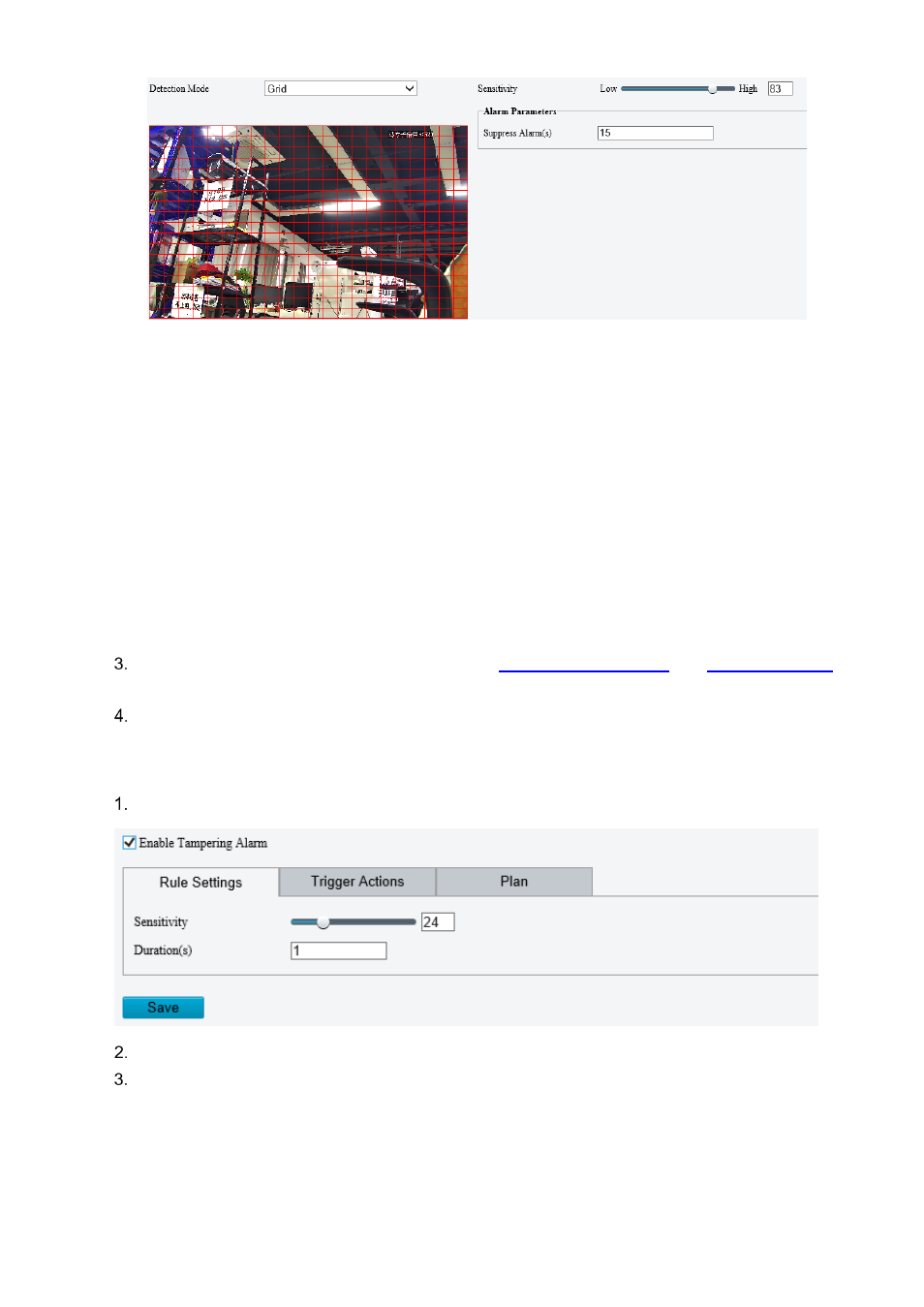Tampering detection – Uniview IPC675LFW-AX4DUPKC-VG 5MP Outdoor Mini PTZ Active Deterrence Network Camera with Night Vision User Manual
Page 105

100
(2) Edit detection areas as needed.
Click or drag on grid areas to erase grids.
Click or drag on blank areas to draw grids.
(3) Drag the slider to adjust detection sensitivity.
The higher the sensitivity level, the higher the detection rate of small motions, and the higher the
false alarm rate. Set based on the scene and your actual needs.
(4) Set
Suppress Alarm
to avoid receiving the same alarms within a certain length of time (alarm
suppression time). For example, alarm suppression time is set to 5s, after an alarm is reported:
If no motion is detected within the next 5s, new alarms can be reported after 5s when the alarm
suppression time is over.
If motion is detected within the next 5s, the alarm suppression time recounts from the time of
the last alarm, and new alarms can be reported when the alarm suppression time (5s) is over.
Set alarm linkage and an arming schedule. See
details.
Click
Save
.
2.
Tampering Detection
The camera triggers a tampering alarm after the lens is blocked for a certain length of time.
Go to
Setup
>
Events
>
Common Alarm
>
Tampering Detection
.
Select
Enable Tampering Detection
.
Set detection rules.
(1) Drag the slider to adjust detection sensitivity. The higher the sensitivity level, the higher the
detection rate, and the higher the false alarm rate. Set based on the scene and your actual needs.
(2) Set the duration of lens blocking. The camera reports an alarm when the duration of lens blocking
exceeds the set value. Set based on the scene and your actual needs.